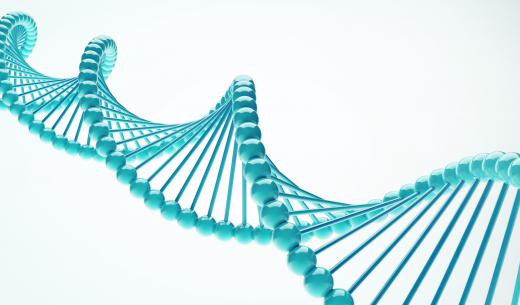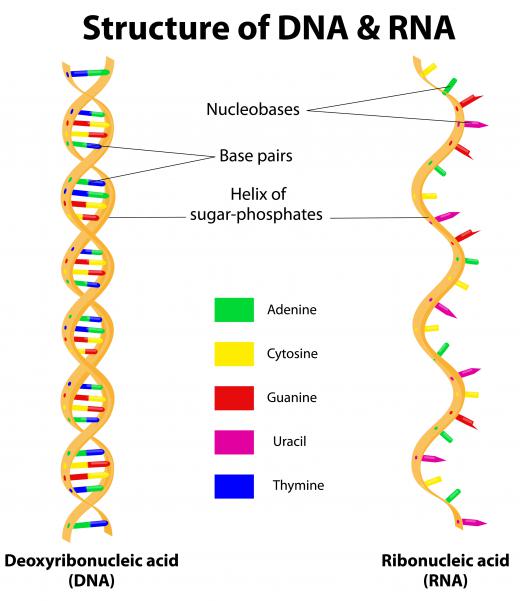What Is a Retrotransposon?
Transposons are pieces of DNA that are mobile, or can move to different places within genetic information of a cell. By moving to a new location within the genome of a cell, transposons can cause mutations to occur, as well as change the amount of DNA found within the cell. They are also referred to as jumping genes, and are grouped into two categories which are class II transposons and class I transposons, or retrotransposons. The difference between these two classes has to do with how they move; a retrotransposon has a two-step movement process.
The method of movement of the segment of DNA is how the transposons are classified into each category. A class II transposon is a piece of DNA that moves from one place to another. The movement of a class I transposon, or retrotransposon, is much more complex, and involves two steps for the movement of the segment of DNA.

The first step for the movement of a retrotransposon is to create a segment of RNA through the transcription of a piece of DNA. The RNA is now free to move throughout the genome as it is not tied to a strand of DNA. When the RNA reaches the new location, a specific enzyme, called reverse transcriptase, makes a new strand of DNA based on the RNA segment. This new piece of DNA is then attached to the new location within the genome.

When a retrotransposon is transcribed back into a DNA segment from the RNA copy, it usually has long terminal repeats (LTRs) at the end of the DNA sequence. LTRs are made up of repeating sequences of bases that can be hundreds or even thousands of bases long. They usually surround a functional part of the DNA, such as a gene, and are necessary for attaching the DNA segment to the original DNA strand. LTRs are one way that scientists can recognize that a section of DNA contains a retrotransposon. It is thought that about 42% of the entire human genome is made up of retrotransposons.
Due to the fact that new copies of DNA are made through the reverse transcription of RNA, adding a retrotransposon is a way to increase the amount of DNA found within a single cell. If a retrotransposon is inserted within a gene or near a gene, then it can cause a mutation to occur. Mutations are basically changes to the DNA sequence and can have positive, negative or no impact on the genome, depending on how the sequence of the DNA is altered.
AS FEATURED ON:
AS FEATURED ON:












Discussion Comments
I want to know how all of these birth defects come into play? Some women who smoke and drink of course are going to have a baby with a birth defect, but what about the women who don't drink and smoke? How do their kids have birth defects?
Post your comments